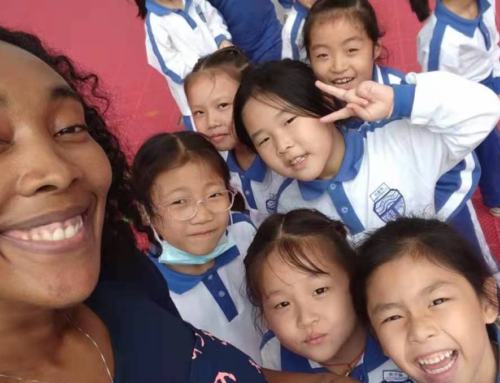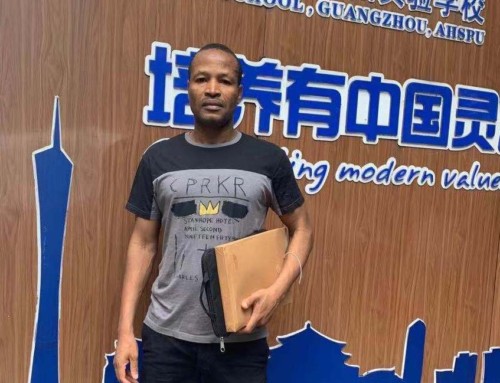In part 1, we looked at an introduction to Parent Teacher Meetings. Let’s continue as we dig deeper into the execution of PTMs.
Planning the PTM?
There are many ways to plan for a PTM, including arranging the appointments. In this passage, we will focus less on tasks that any high schooler should be able to accomplish (calling parents and arranging meeting times) and more on how to go about arranging comments, and tying them in with our themes and relevant student resources.
In the modern ‘sports analytics movement’ it is popular to place players into tiers according to relative performances. The idea being that every player in each different tier has similar skills, growth potential and records of achievements. It is used by smart executives to make personal decisions, contract figures and trade proposals. By extending this idea into the realms of ESL, we are able to use it in the classroom to measure student successes against those of their peers. This is important in that it is a useful way of presenting information to parents in a way that is relevant to their own frames of reference.
PTM’s occur after every teacher’s favourite day on the calendar, the ‘class open door’. And parents compare their children – measuring them off against the best and brightest, the weakest and strongest. It is the ESL interpretation of William Golding’s ‘Lord of the Flies’.
By planning our comments in tiers, we ensure that our message is clear; we ensure that students with similar symptoms get similar prescriptions; we ensure that students with similar strengths get treated equally. In short, we eliminate any claims of favouritism and inconsistency. Instead, we are able to provide parents with a clear comparison that usually reflect what they perceive as their child’s place in the pecking order. And if little Johnny’s mother thinks he should have the couch, well, that’s why we collect the student resources isn’t it?
When writing the comments for each tier, there are a number of factors we should be aware of -consistency, themes, the time of the PTM relative to the course and the individual requirements of the student. Placing kids into tiers does not need to rob us of that individual attention to detail; it just provides an overall context, making those individual comments even more powerful. Before the PTM, when we are putting our thoughts and comments together, we should be aiming for a balance between positive and developmental, clinical and anecdotal, and of course we should be both charming and direct. Our comments should cut through the clutter and give parents a clear idea of where their child is on their academic path.
If we are trying to encourage enrolment in the higher levels, our tiers will also include comments that relate to “work on” tasks, or as they are sometimes called ‘action plans’. I once had a parent ask me if Little Kelly could move from level one directly to level three. I thought that it was possible, but told the mother that in order for that to happen “Little Kelly would have to demonstrate that she had shown significant improvement in her writing ability.” I gave the mother a set of grammar based worksheets that Little Kelly had to ‘work on’ before I would even consider pushing her ahead. In the end, Little Kelly was unable to complete the task and the mother was grateful for the opportunity, while satisfied to enrol her daughter as one of the stronger students in level two. She wanted her daughter to hold the couch shell.
How do we communicate with parents?
There are other cultural barriers and communication challenges that we need to consider. And one of the trickiest is the presence of translators, and how to best utilise them. The very core of the ESL industry is that we are dealing with parents, who at best, are trying their best to communicate in their second language, and who in many, or most situations, do not have a strong enough ability to communicate directly with the teacher.
When working with a translator, there are a number of approaches we can use. In their appropriate setting, they are all valid. It comes down to preference and comfort in your choice, so here are just a couple of contrasting options.
Many people will speak directly to the parents, in full, and then allow the translators to do their thing with the parents. This is useful when the parents speak some English, and just need some gaps filled, but there is some danger that the parent switches off while the teacher talks, and instead just waits for the translation, in which case, does the teacher really need to be there?
A friendlier method, and certainly it is more conducive to an actual dialogue, is to set up the room, and interview, as a conversation that the translators are involved in. If the teacher can contain their comments to smaller sound bites, that are clear and concise rather than rambling, they can create a conversation that is easier to follow, and therefore reply to. In this way, we are able to create an open dialogue which the parents will feel that it allows them their chance to participate. Ultimately, this is going to help them accept the advice and feel like they have control over the situation at the same time.
Conducting the PTM
There are a number of factors that we need to consider as we conduct the actual PTM. From the greeting stage, through to the farewells and handshakes, there are a number of personal, professional and cultural aspects to consider.
First impressions are important, and they start from the introductions. In South Korea, you would offer a bow to the parents, and a two handed handshake for the father before you offered them a chair and made them welcome. In Australia, a high five and a ‘G’day mate’ may well be acceptable. In England, we would need to say ‘Hello,’ shake hands and then make a quip about the ‘unfortunate weather’ as a means of making our guests feel comfortable. And of course, if we were to teach in Canada we would be required to be exceedingly polite. The point is that every culture has its own norms and expectations, and in order to get the PTM off to the right start, we need to understand and follow them.
What happens after the PTM?
An under-rated part of any meeting is the follow up after the meeting has finished. A PTM is no different. Teachers should offer to be available for follow up questions. It is also important to sit down with your colleagues and make them aware of any issues that came up in the PTM, as well as any agreements which were reached and need to be kept.
It is also important to discuss feedback with our managers, and progress advisors, so that they can follow up with parents at a later date to confirm what was discussed, and ensure that action plans are being followed.
Full team communication is important – it allows all functions to move forward with a coherent and cohesive plan that everybody has bought into. It also shows that the teacher is taking the meetings seriously and is prepared to take a personal interest in each student’s progress.
In all, I believe that the Parent Teacher Meeting is a vital tool that schools use to connect with parents, and create a partnership between parents and the school that will result in improved results and performance from the students.

















Leave A Comment